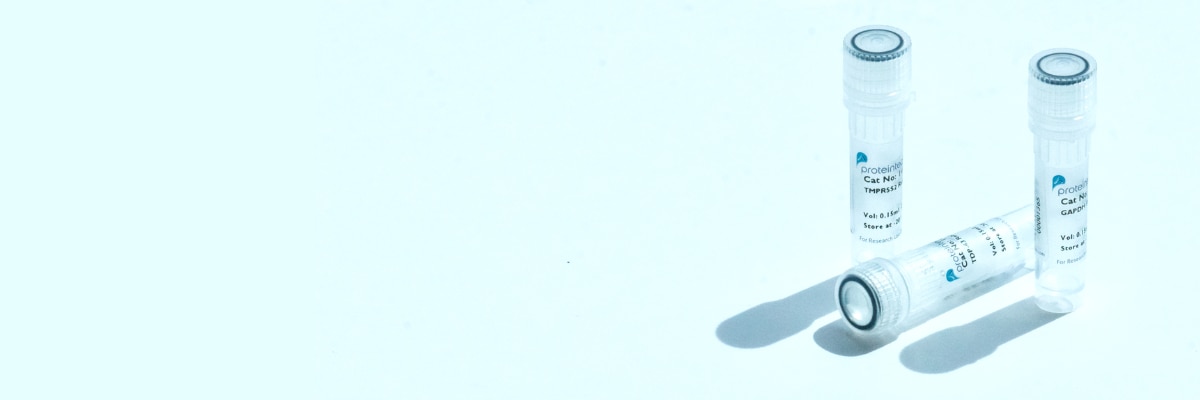How To Optimize Your Western Blot
Western Blot protocol tips to refine your blotting experiments and ensure they get off to the best start possible.
Jump to:
- Western Blot Protocol
- How To Optimize Your Western Blot
- SDS-PAGE Gel Recipes
- How To Optimize Your Results With Low MW Proteins
- Tricine Gel Recipe For Low Molecular Weight Proteins
- Choosing The Right Lysis Buffer
- Choosing The Right Western Blot Detection Method
- Western Blot Troubleshooting: Why Does The Observed Protein Molecular Weight (MW) Differ From The Calculated One?
- Western Blot Troubleshooting: High Background
- Western Blot Troubleshooting: Weak/No Signal & Other
- Western Blot ppt
- Western Blot Video Protocol
Obtaining perfect, publication-ready results straightaway is not exactly the norm when performing Western blotting. However, there are steps you can take to refine your blotting experiments and ensure they get off to the best start possible.

Proteintech control antibodies are $189 each for a 150ul size vial
View all Loading Control Antibodies1. SDS-PAGE
Your Western blotting experiments start long before you begin to work with your membrane. If your gel is sloppily made or you run it at an excessive voltage, your final results will suffer. If you cast your own gels, take extra care to ensure uniformity in their makeup. Select the right acrylamide percentage and avoid that dye-front “smiling” effect by resisting the temptation to run your gels at high voltages.
Above all, load a uniform amount of protein; the Proteintech validation lab finds that 0–50ug of protein is a suitable amount for the detection of most proteins, and usually gives streak-free and well-separated bands.
2. Membrane
Membrane choice can make a huge difference to the outcome of your Western blotting experiments. The two main membrane types are PVDF and nitrocellulose, but there are now several versions of each on the consumables market.
PVDF tends to be good for lowly expressed proteins, it works better with hydrophilic/polar/charged target antigens. Nitrocellulose membranes are good for normal or highly expressed proteins and work better with hydrophobic/ non-polar antigens.
3. Antibody Concentration
Your next step should be to determine the optimum working antibody concentration. The rate of binding between antibody and antigen is affected by their relative concentrations in solution (among other variables). Often you will need to tweak the antibody concentration to get better blots. This step is called antibody titration, and it should be performed every time a new antibody or new set of experimental conditions is used.
“Often you will need to tweak the antibody concentration to get better blots.”
4. Blocking conditions
Various blocking buffers are available and not all of them work in every situation. It is important to try several blocking buffers for each antibody-antigen pair. Remember that milk-based blocking buffers contain such things as endogenous biotin, glycoproteins, and enzymes that may interfere with the signal. Milk-based buffers, for example, contain active phosphatases that will sabotage your detection of phosphorylated proteins; in these cases, try alternatives such as bovine serum albumin based blockers.
“Remember that milk-based blocking buffers contain such things as endogenous biotin, glycoproteins, and enzymes that may interfere with the signal.”
5. Washing
If the Western blot shows high background signal, revising the washing steps on the next run-through has proven to be useful. Increasing washing times and volumes will reduce background signal along with performing additional buffer changes or using a stronger detergent (e.g., SDS instead of Tween 20).
6. Detection
The detection stage is integral to obtaining a good Western blot signal. There are many chemiluminescent reagents and chemiluminescent alternatives out there, such as fluorescent detection—so there are plenty of options if your current detection method isn’t meeting lab standards. You can choose reagents with more sensitivity or those that produce longer lasting signal, for example. The latter choice will increase the reproducibility of blots immeasurably. A simpler method is to experiment with film-exposure times. This is probably the optimization step performed most frequently, as it is quick and easy. Always expose your blots for a range of individual time points.